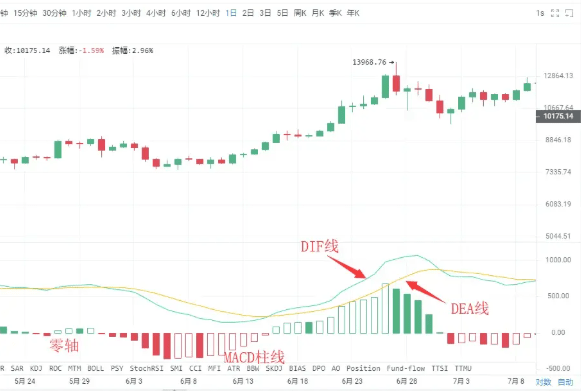Have you ever experienced consecutive losses or frequent liquidations?
Then you feel frustrated and regret your decisions?
Are you eager to recover losses, but instead, are getting deeper into trouble?
Do you repeatedly fantasize about the scene of success, only to be slapped in the face by reality?
This is something every trader has experienced; you and I are no exceptions!
The difference is that some people have given up during such torment, while few who have lost their principal persist. But what is the meaning of persistence without a complete epiphany?

Profit-making tips for perpetual contracts:
1. Avoid going all in
How should funds be allocated? Fund allocation should be understood from two levels:
Firstly, from the perspective of risk, understanding capital allocation starts with clearly defining how much loss our account can or is prepared to bear. This is the foundation of our capital allocation thinking. Once this total is determined, we should consider how many times we can afford to lose to the market consecutively before we willingly admit to misfortune and failure.
I personally believe that the riskiest method should also be divided into three parts. That is to say, you should at least give yourself three chances. For example, if the total account balance is 200,000, and the client allows a maximum loss of 20%, which is 40,000, then I suggest a risky loss scheme of: first time 10,000, second time 10,000, third time 20,000. I believe this loss scheme still has a certain rationality. Because if one out of three attempts is successful, you can profit or continue to survive in the market. Not being kicked out of the market itself is a kind of success, and there is a chance to win.
2. Grasp the overall market trend
Trends are much harder to trade than ranges because trends involve chasing highs and cutting losses, requiring stability in holding positions, while buying high and selling low aligns more with human nature.
Trading is about not making money when it aligns too closely with human nature; the harder it is to trade, the more profitable it becomes.
In an upward trend, any violent pullback should prompt you to go long. Do you remember what I said about probabilities? So, if you're not in the trade or have exited, be patient and wait for a 10-20% drop; be bold in going long.
3. Set profit-taking and stop-loss targets
Profit-taking and stop-loss can be said to be the key to whether one can make a profit. In multiple trades, we need to ensure total profit exceeds total loss. Achieving this is not difficult; just follow these few points:
① Each stop-loss should be ≤ 5% of total funds;
② Each profit should be > 5% of total funds;
③ Total trading win rate > 50%
Meeting the above requirements (profit-loss ratio greater than 1 and win rate greater than 50%), you can achieve profitability. Of course, it is also possible to have a high profit-loss ratio with a low win rate, or a low profit-loss ratio with a high win rate. Anyway, as long as total profits are positive, that is enough. Total profit = initial capital × (average profit × win rate - average loss × loss rate).
4. Remember not to trade too frequently
Since BTC perpetual contracts are traded 24/7 without interruption, many beginners trade every day, almost every trading day in a month of 22 trading days, as the saying goes: if you often walk by the river, how can you avoid getting your shoes wet? The more you trade, the more mistakes you will make, and after making mistakes, your mentality will worsen. Once your mindset deteriorates, you might act impulsively, opting for 'revenge' trades: possibly against the trend or heavily leveraged. This can lead to a series of mistakes and easily cause significant losses on paper, which may take years to recover.
5. Timing for entering contracts
Many people trade 24 hours a day, which is essentially no different from giving away money. The purpose of contracts is to create stable profit strategies within controllable risks and relatively stable indicators, not to click buy 100 times and become rich! Therefore, the timing for entering contracts is particularly important!
⑴: Do not enter positions during periods of significant favorable or unfavorable news, as the market is extremely chaotic at this time. Spot prices can fluctuate rapidly between 1-3%, and if you choose to gamble on the market, it is easy to be caught off guard.
⑵: I generally choose to enter the market after the second bottom or after a rise following a significant fluctuation, because after the second wave of market movement, the fluctuations will gradually stabilize. The risk coefficient in the subsequent range is the lowest. The purpose of a contract is to implement the most suitable strategy within the smallest risk range.
⑶: Enter the market only within the range of indicators, and never open positions if the indicator parameters do not meet your expectations. This can be understood as entering within your strategy range, ignoring market movements until your psychological price level is reached. Because while contracts amplify leverage, the risk coefficient also increases, so self-discipline is crucial.
In summary, when the market stabilizes and indicators are in place, the risk rate can be said to be reduced by 50%, and only then can trades be made.